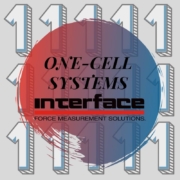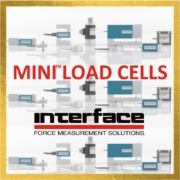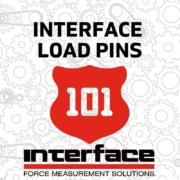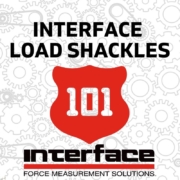Weighing Sensor Applications and Innovative Use Cases
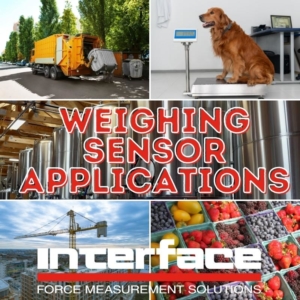 The advancements in sensor technologies have expanded the capabilities of how accurate data can improve performance of weighing equipment, tools, machines, components, and products. Design and manufacturing engineers are using precision weight measurements today with higher frequency to improve durability, usability, and reliability.
The advancements in sensor technologies have expanded the capabilities of how accurate data can improve performance of weighing equipment, tools, machines, components, and products. Design and manufacturing engineers are using precision weight measurements today with higher frequency to improve durability, usability, and reliability.
What has changed in the last decade that has spurred this high demand for weighing sensor technologies? Primarily it is related to the capabilities and features. This includes the ruggedization of load cell form factors to withstand harsh conditions, wireless capabilities to transmit and analyze data for continuous monitoring, smaller sensors like load buttons, ease of use and installation, and submersible options. There is also a growing requirement to design weighing sensors into a product to activate components for real-time user feedback and ensure safety.
Examples of how sensors in weighing applications are supporting innovation are abundant. Manufacturers utilize weight in design, build and supply. Defined weight is used in most product specifications, which requires precise accuracy in measurement. Utilizing precision force sensing solutions and instrumentation allows product engineers and manufacturers of all types to collect data in real time. IoT enabled weighing and scale solutions are frequently used in the modernization of products and industrial automation.
Interface supplies highly accurate and reliable load cells and sensor technologies for weighing and scale solutions. Industry use cases range from medical bag weighing to ice machine weighing. Weighing and scales must be dependable and always provide correct data. Precision sensors are a critical part of this requirement.
Common Weighing Use Cases for Advanced Sensor Technologies
- Center of gravity testing
- Inventory management and control
- Batching and packaging
- Check weighing
- Process control
- Sample testing and material testing
- Equipment safety monitoring
- Transportation technologies
- All types of scales
The abilities to use precision weighing sensor devices in the form of load pins, load shackles, tension links, load beams, miniature load cells, and wireless load cells continues to expand the boundaries beyond what has been known as test and measurement. Facilities and cities use connected force sensing trash receptacles for optimizing schedules of waste management companies to reduce costs and increase efficiencies. Innovative smart pallet force sensing helps to track products and goods at the dock to reduce expenses and increase productivity. Silo weighing for inventory management. Setpoints are configured to automatically generate purchase orders when product levels fall below a defined threshold.
Additional applications recently featured in Weighing Your Options Webinar demonstrate how Interface weighing solutions support breakthrough use cases and inventive new products. Here are a few examples of these weighing applications.
Tank Weighing and Center of Gravity Using Weighcheck Load Cells
Interface’s customer needs to monitor the amount of material in a tank by weight and locate the center of gravity. The proposed solution is to use Interface’s A4200 Zinc Plated or A4600 Stainless Steel Weighcheck Load Cells, along with Interface instrumentation 1280 Programmable Weight Indicator and Controller. Interface provided a solution that monitors the amount of material by weight in their tank while locating the center of gravity. Watch as Ken Bishop demonstrates the A4200 and A4600 weighcheck load cells https://youtu.be/G6NA84I73Zo .
Produce Weighing Using Platform Scale Load Cells
A customer owns and operates a fruit packaging plant. They want to weigh the bins full of fruit that are loaded onto conveyor belts that transfer the fruit to other steps of the distribution process. Interface suggests installing SPI Low Capacity Platform Scale Load Cells, along with WTS-AM-1E Wireless Strain Bridge Transmitter Modules, in the center of the platforms the bins of fruit are loaded on. The WTS-AM-1E’s wirelessly transmit the data collected from the SPI’s to the WTS-BS-1-HA Wireless Handheld Display for multiple transmitters, and the WTS-BS-6 Wireless Telemetry Dongle Base Station when connected to a computer. Results can be graphed, logged, and seen during operation using this system.
Livestock Weighing System Use Sealed Beam Load Cells
A rancher wants to accurately weigh their cows for multiple reasons. They want to make sure their cows are at a healthy weight and want to maintain their weight. But they also want to know the optimal time for breeding based on the weight of their livestock. Interface’s solution is to bolt four SSB Sealed Beam Load Cells at the bottom of a metal platform, that is placed on the inside of the customer’s cattle cage. Once the cow has walked onto the plate, the SSB Sealed Beam Load Cells will measure the force pressure applied. With all four connected to JB104SS Junction Box, which is then connected to the 480 Bidirectional Weight Indicator combined accurate weight results for real-time display.
Crane Weighing Verification Using Wireless Tension Link Load Cells
A customer wants to verify that their crane is strong enough to safely lift a heavy load, at its rated maximum load capacity. A wireless solution helps to avoid long cables and for faster installation time. Interface WTSLTL Lightweight Wireless Tension Link Load Cells can measure the load’s maximum capacity. The WTS-RM1 Wireless Relay Output Receiver Modules also can trigger an alarm that can be set when the maximum capacity of weight/force has been reached. The data is transmitted and can be reviewed with the WTS-BS-1-HS Wireless Handheld Display.
ADDITIONAL RESOURCES
Garbage Truck On-Board Weighing
CPG Snack Weighing and Packaging Machine
Weighing Your Options Webinar Recap
CPG Veterinary Weighing Scales
CPG Water Bottle Dispensing and Weighing
CPG Water Bottle Dispensing and Weighing App Note

